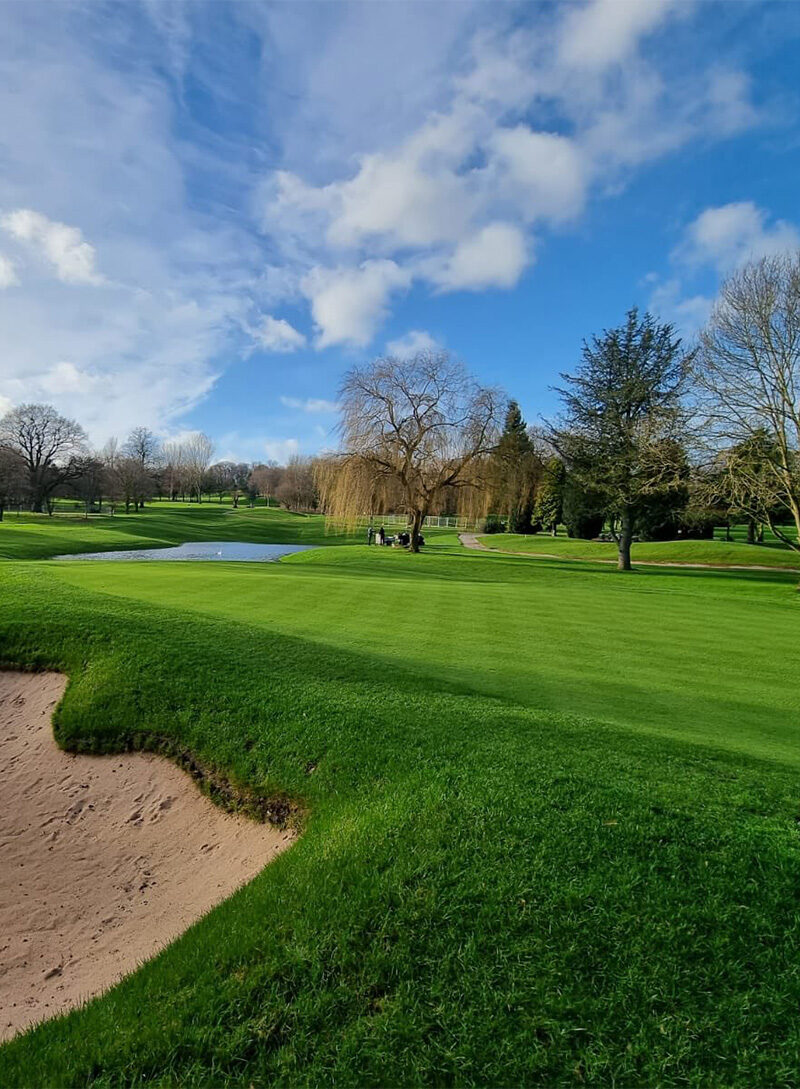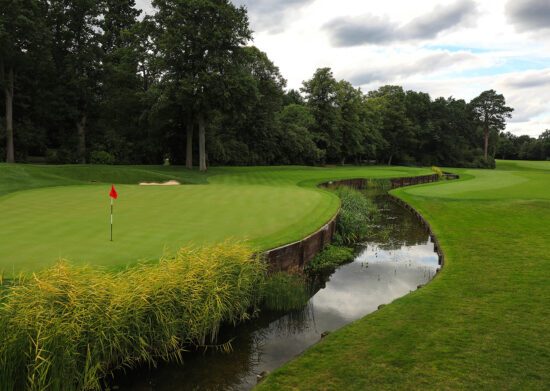

Unforeseen delays and difficult ground conditions
Many challenges presented themselves, not least the delayed start of the works throughout 2021 with difficulties agreeing terms between HS2 and land owners, and nesting birds preventing access. However, during 2021, 3 no holes were constructed while matters were resolved and in March 2022 works started in earnest on the 9 no remaining new holes.
Ground conditions presented a significant challenge with very heavy and unstable soils and a high water table. Proposed soakaways were changed to positive outfalls where possible and pumped discharge elsewhere.

Detailed project planning and expert site management
The scope and sequence of work comprised the following:
- Site clearance
- Topsoil strip and store
- Bulk cut and fill earthworks
- Construction of 12 no new green and tee complexes to USGA specification
- Topsoil re-spread
- Primary drainage at 5 metre centres
- Installation of new greens, tees and fairway irrigation system
- Extensive ditch network including both culvert and bridge crossings
- New gravel cart path network
- Construction of 3 no new lakes with transfer pumps and aerators
- Incorporation of specified soil amendments
- Cultivation and seeding of all areas
- Tree planting and landscaping.

Delighted golf club members
The new holes opened for play in Autumn 2023.
“We took the opportunity to level up the playing experience by introducing more playing strategy into the game,” said Jon Hunt, golf architect at International Design Group. “We now have sharper doglegs, approach bunkers and new ditches.”
Hunt says bunkers are steeper and deeper as well as having more character, and that greenside bunkers closer to the putting surface.
“The new first is a classic risk and reward hole,” said Hunt. “If the player can fly the bunker on the left of the fairway, there’s an easy bump and run into the slightly uphill green. However, if their tee shot finds its way to the right of the fairway, the adjacent lake will come into play and a flop into the green is needed.”
The new ninth has a ridge running diagonally across the landing zone. If a player’s tee shot reaches the top of the ridge, they will have good visibility of the green, if they are short, they face a more difficult approach. “The ridge runs across the green, linking the two bunker noses, makes long putts difficult, so accuracy into the green is critical to make a birdie,” said Hunt.
“The new sixteenth [old eighth] is the only significant drop hole on the course. The new teeing position forces a tighter dogleg. Some long and accurate hitters could reach the green but there’s danger all round. It is far better to lay up with a long iron or rescue club in front of the tight fairway bunkers for an easy pitch into the green.
“At the first landing area on the new seventeenth [old ninth], the righthand approach bunker appears to block access to the diagonal green. However, once closer, players will see there is plenty of space behind the approach bunker on the right.
“And the new eighteenth has comically been dubbed ‘the world’s first dogleg par three’ with a long iron off the tee needing perfect placement to land on the small, undulating green. Less confident players can lay up on the fairway meandering round the new pond.”
While there are now some doubts over the extent to which the HS2 project will be completed, the work around Ingestre, which is included in phase 2a of the project, is still expected to proceed, albeit later than first planned.




